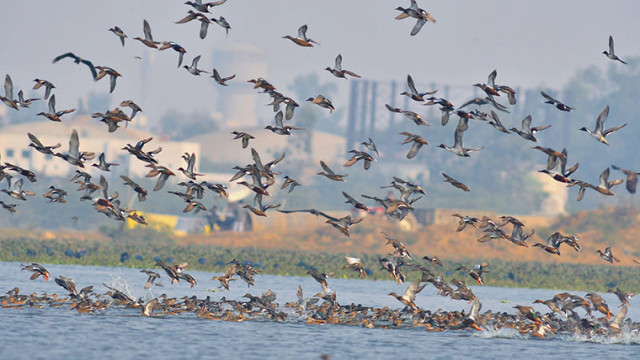DHAKA, May 11 (V7N) – For centuries, birds have inspired humankind—not just through their grace in flight but also through the lessons they offer about nature and balance. As seasons shift, while animals like bears and squirrels prepare for hibernation or reawakening, migratory birds take to the skies on remarkable journeys that span continents and oceans.
These epic migrations are not just awe-inspiring; they are essential for the planet’s health. Birds pollinate flowers, spread seeds, and help control insect populations, all of which contribute to balanced ecosystems and stable food systems.
Wildlife biologist and UN conservation adviser Francisco Rilla highlights another critical role of migratory birds: they act as "bioindicators." Because they avoid contaminated environments, their movement patterns offer valuable insights into the health of air and water systems.
Record-Breaking Flights Across the Globe
Each fall, decreasing daylight signals to birds that food will soon be scarce, prompting their departure to warmer climates. Some species, like the small yet resilient Arctic tern, travel as far as the Antarctic Circle from the Arctic, covering about 90,000 kilometers annually—the longest migration of any animal on Earth.
Another extraordinary traveler is the bar-tailed godwit. Originating from Alaska, it migrates to Tasmania, Australia. Notably, a young godwit set a Guinness World Record by flying non-stop for 13,560 kilometers over 11 days and one hour. These birds can temporarily reduce their internal organs in size to store fat, which fuels their long voyages. Yet, climate change is increasingly making these migrations more difficult.
Human Activity and Its Consequences
Birds rely on natural cues like the sun, stars, coastlines, and water bodies to guide them, and they need undisturbed resting and feeding grounds during migration. However, climate-induced changes such as rising sea levels and coastal flooding are disrupting these stopover sites.
Additionally, ocean acidification—caused by excess carbon dioxide—affects small crustaceans, which are a key food source for migratory birds. This disruption in the food chain jeopardizes their ability to complete journeys or reproduce successfully.
Severe weather events—storms, high winds, and extreme temperatures—pose another risk. While some species, like the Arctic tern, manage by burning more energy mid-flight, others, like the now-extinct slender-billed curlew, have not been able to adapt to the pressures of climate change and habitat degradation.
Climate shifts also affect bird behavior. In warmer climates where food remains abundant, some birds no longer return to their original breeding grounds or significantly shorten their routes. This can trigger competition for resources between migratory and resident species.
Supporting Migratory Birds in a Changing World
While feeding birds may seem helpful, Rilla warns it can actually do harm. Foods like bread or human-grade seeds can leave birds too full to consume essential nutrients. Moreover, visible food sources may make them vulnerable to predators.
Instead, experts advocate for policy-level interventions. Expanding networks of protected migratory routes through global agreements like the Convention on the Conservation of Migratory Species of Wild Animals is key. The United Nations Environment Program goes a step further, encouraging more bird-friendly urban planning—like reducing pollution, avoiding reflective glass buildings, and restoring natural habitats.
The 2025 theme of World Migratory Bird Day calls for greater coexistence between humans and birds, emphasizing that their survival is intricately tied to our own. As Rilla aptly puts it, “What happens to them could also happen to us.”
END/MSS/RH/HON































Comment: